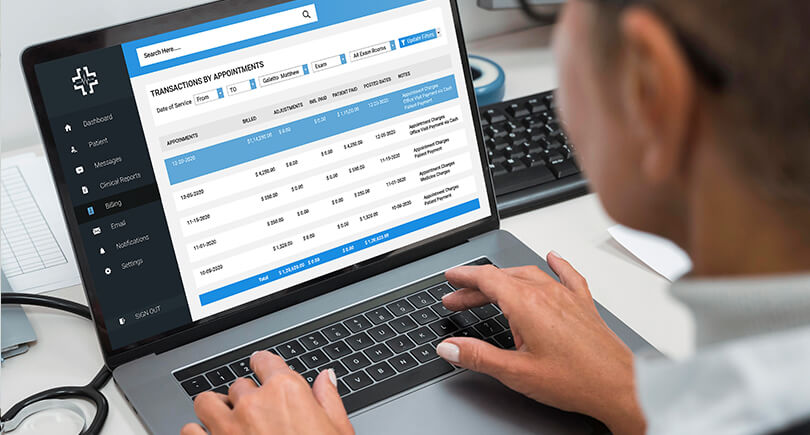Introduction:
With time, the government implemented specific regulations to improve the healthcare industry. The medical Coding and classifications system is also one regulation that providers and insurance companies follow for a smooth transfer of care service claims. Medical coding systems are a set of codes designated to diagnosis and resources required for it.
In any care setting, billing and coding simplify the payment and reimbursement workflows. It helps in smoothly transitioning bills and money between healthcare providers, insurance companies, and patients. Besides, it’s no surprise that nearly 94% of today’s care providers are willing to invest in medical coding system software.
At OSP, we were approached by a U.S based client who wanted a digital trading platform for A/R. The client faced multiple challenges, including high claim denials and incompetent medical coding and verification. We understood their requirements and concern areas. So, we devised our solutions to ensure that our clients get-
- Higher ROI– Our software assured 95% accuracy in predicting claim approvals.
- Accurate validation of ICT and CPD codes– This software system improved the medical coding and verification to ensure process claims.
- Enhanced A/R flow– The client’s A/R purchasing power increased and even increased their savings.
How To Implement Medical Coding Systems?
In healthcare software product development, medical coding software needs to follow a specific classification. Often medical coding and billing software vendors offer ready-made systems but opting for custom healthcare software solutions for medical coding is a smart choice. Moreover, the medical coding system is based on these types of coding-
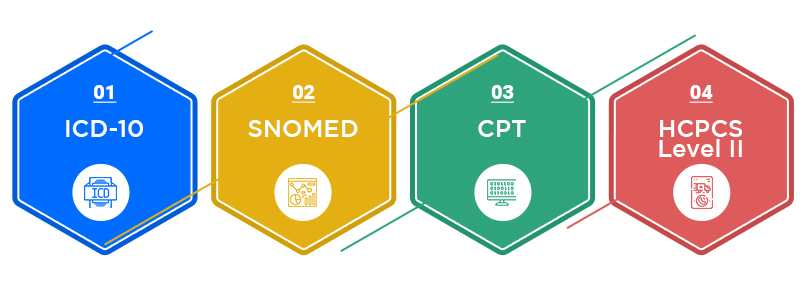
- ICD-10- ICD-10 refers to the International Classification of Diseases, tenth edition. This medical coding system started in 2015 and is an upgraded version of the ninth edition, as it includes more codes and classified categories. It ensures more inclusivity of different health conditions. Even advanced telehealth solutions and services are included in this coding system. Besides, ICD-10 operates under two systems- ICD-10-Clinical Modification and ICD-10-PCS. While ICD-10-CM codes are related to diagnosis, the ICD-10-PCS is for hospital procedures. So, under ICD-10-PCS, hospital inpatient procedures in patient engagement systems or integrated health solutions are also designated codes. Further, this widely accepted ICD-10 automated coding system is also the most popularly used medical coding software.
- SNOMED- Unlike ICD-10, SNOMED helps medical experts compare and contrast different health issues across the world. ICD-10 is for tracking medicines and hospital procedures. But SNOMED or Systemized Nomenclature of Medicine is the reference terminology with over 31,000 active concepts. So, healthcare providers and leaders find this coding system effective in predicting abnormalities in the patient population. Besides, if you have an affiliate for SNOMED, you can use it for charity projects too.
- CPT- Quite similar to ICD-10 is CPT or Current Procedural Terminology. CPT is a set of standard codes commonly used in a medical setting. Besides, CPT also has three categories- five-digit codes description for a procedure or service, Alphanumeric tracking codes for implementation quality, and provisional codes for any new procedures, services, or solutions. So, new services under remote patient monitoring, for example, are well-suited for this coding system.
- HCPCS Level II- HCPCS or Healthcare Common Procedural Coding System is based on CPT. Apart from physician care services, other non-clinical services like pharmacy, ambulance calls, and more are all included in this medical coding system.
Two Key Features Of Medical Coding Systems
Medical coding and billing are complicated processes. But with medical coding and billing software, the processes turn simple and claims approval rates increase over time. If you’re planning to invest in coding systems in healthcare, you need to ensure that the software includes these two features.
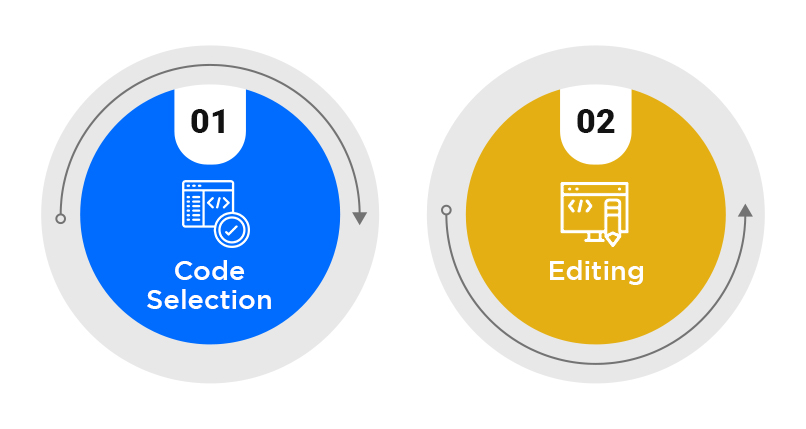
Code Selection- You’ll find a myriad of Medical coding system software options. Some of them are billing code systems where it’s medical billing software with coding functions. There are customized medical coding software as well—however, the criticality of the software to ensure correct codes. Entering an incorrect code can cost the provider hundreds of dollars. So, medical coding system software assures seamless code selection options from CPT, ICD, or HCPCS systems. Moreover, streamlining codes in the software is more effective with automated healthcare solutions.
Editing- A recent report highlights that roughly 17% of insurance claims are denied. Coding errors, lack of rechecking, and missing details are potential reasons for claim denials. So, it’s best to proofread the details, recheck the codes and compliance checks. However, with medical coding software solutions, this manual checking and rechecking burden is removed. Medical coding software must have an editing feature to help coders reduce errors.
Challenges in Implementing Medical Coding Systems
While the demand for quality software is quite high, some healthcare organizations have limited resources. The development and implementation of medical coding systems often encounter some real-time challenges. Some of these challenges are-
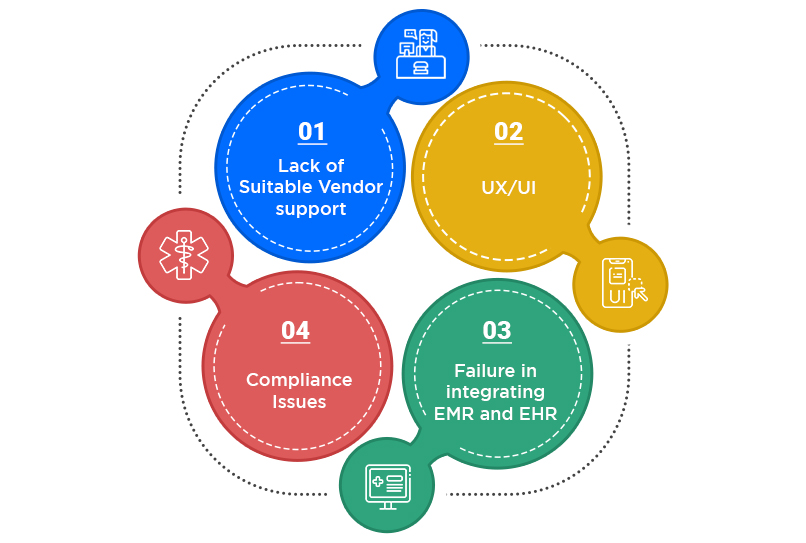
1. Lack of Suitable Vendor support- It’s great to go for off-the-shelf coding solutions. But it can cost you more. However, several providers fail to implement hospital coding systems due to a lack of suitable vendors. Without the right software development support, building advanced medical coding software is impossible. So, providers need to do intensive research to find a suitable vendor for automated clinical coding as per your requirements.
2. UX/UI-Medical billing and coding require ample medical information. Even coders have to stay updated about new codes and billing criteria. However, this is a challenge for coders and healthcare organizations, as often, coding professionals are exhausted using complex coding solutions. So, todays’ medical coding software strives to create a balance to improve users’ UX/UI when streamlining the entire process. Moreover, using medical informatics to gather actionable information can help in extracting data for coding systems.
3. Compliance Issues-The most critical challenge in implementing medical coding systems is a failure in compliance. Healthcare information is prone to hackers. And lack of compliance leads to security threats of the medical coding software. So, the medical coding software solutions must ensure complete HIPAA compliance.
4. Failure in integrating EMR and EHR- Many health leaders had spoken about the significance of integrating EMR and EHR in the billing and coding systems. However, the lack of adequate resources affects the integration of EMR and EHR in medical coding systems. The medical coding system software integrated with EMR and EHR benefits providers in different ways. It improves electronic data interchange that results in faster claim approvals and even enhances practice management solutions.
Key Trends To Follow in Medical Coding
With recent developments in medical coding and billing software solutions, leaders pointed out some of the key trends-
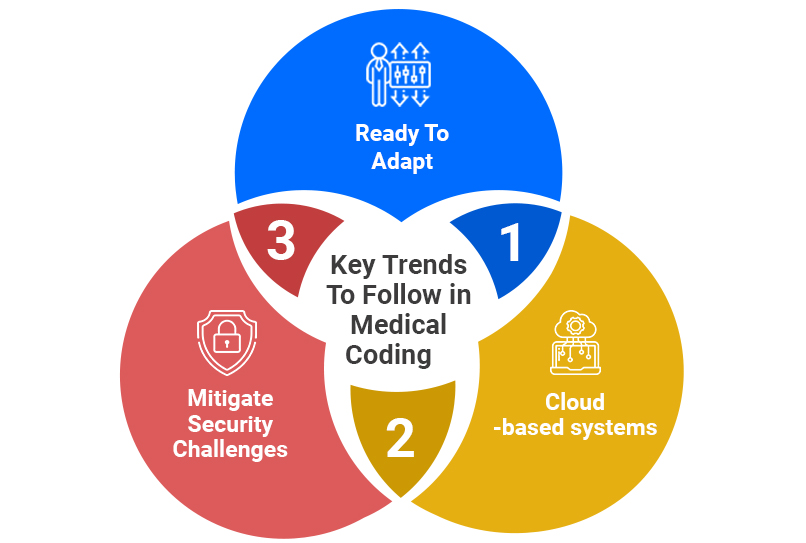
1. Ready to Adapt- Frequently changing U.S medical coding system requires software that shows flexibility and adaptability to new changes. Such medical coding system incurs minimal losses and updates as per new codes.
2. Cloud-based systems- If you want a medical coding system and outsource the software, you can go for a cloud-based solution. Healthcare cloud computing ensures faster data extraction, migration, and storage.
3. Mitigate security challenges- One of the significant trends that medical coding systems need to focus on in the future is eliminating new security challenges. Medical coders must check patient information related to telemedicine and RPM. So, ensuring security under these situations is essential to developing advanced medical coding software.
Conclusion
Now that you have this guide on Medical Coding Systems in 2023, you can better understand your healthcare coding and billing requirements. Further, you can draw insights from market analysis to know more about medical coding and billing. However, it’s best to go for customized medical coding systems. Such solutions understand your organizations’ operations and functions accordingly.
OSP is a trusted software development company that delivers bespoke solutions as per your business needs. Connect with us to hire the best talents in the industry to build enterprise-grade software.

How can we help?
Fill out the short form below or call us at (888) 846-5382
Looking for software solutions to build your product?
Let's discuss your software solutions for your product in our free development acceleration call!
Get In Touch arrow_forwardDiscuss Your Project Handover with a team of expert Book a free consultation arrow_forward
About Author

Written by Riken Shah linkedin
Riken's work motto is to help healthcare providers use technological advancements to make healthcare easily accessible to all stakeholders, from providers to patients. Under his leadership and guidance, OSP Labs has successfully developed over 600 customized software solutions for 200+ healthcare clients across continents.







